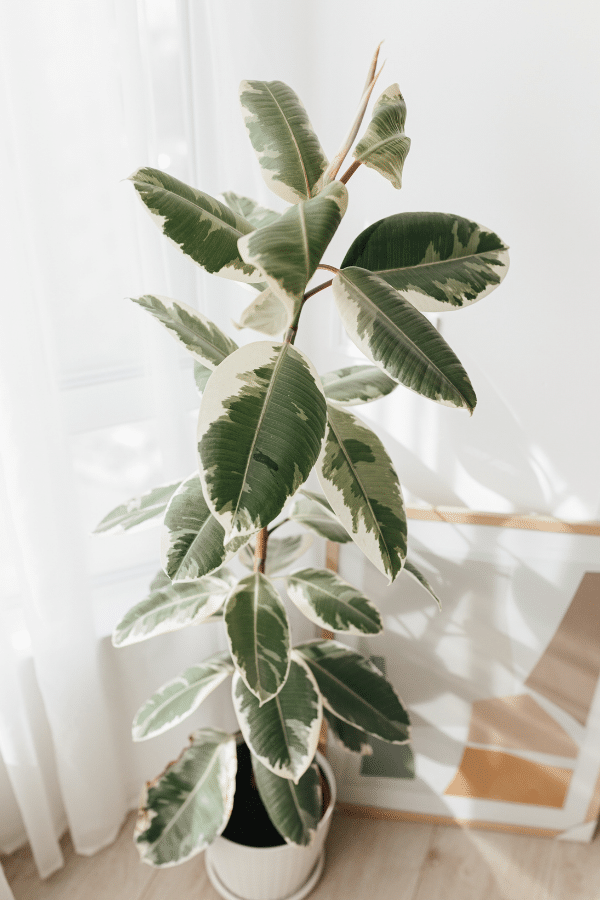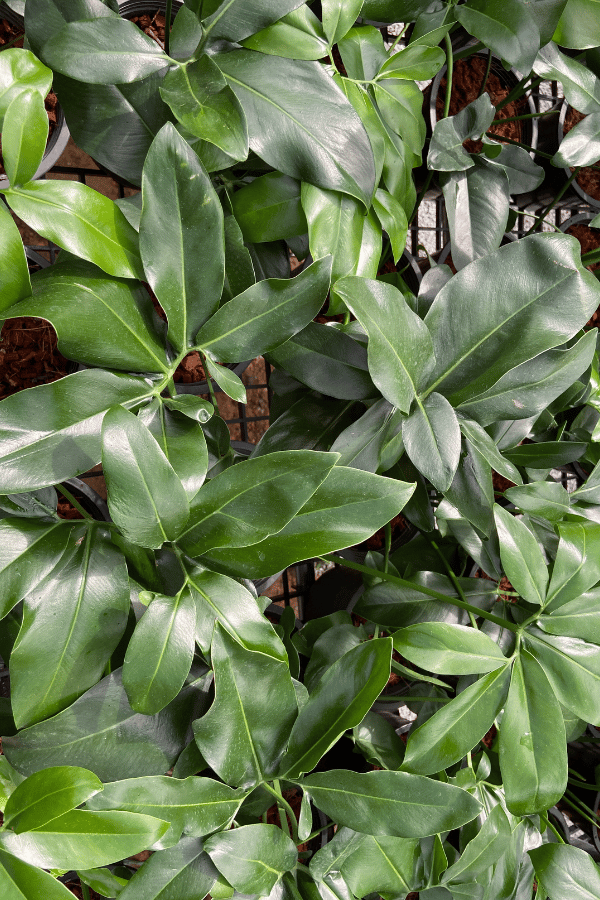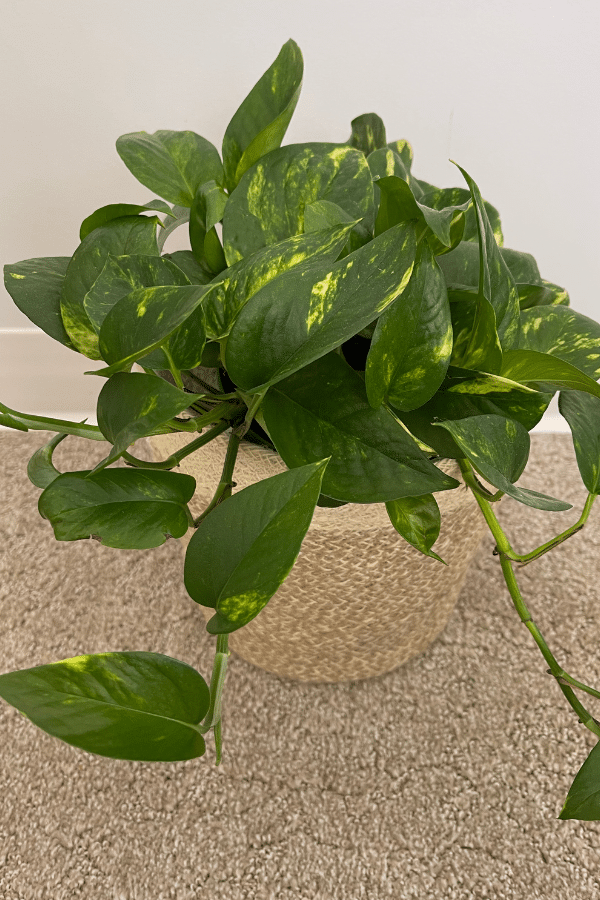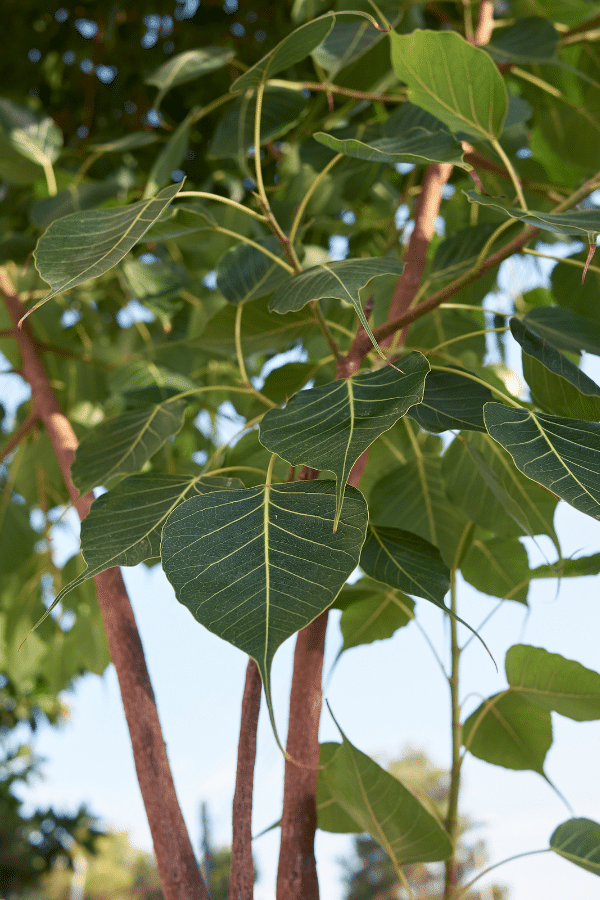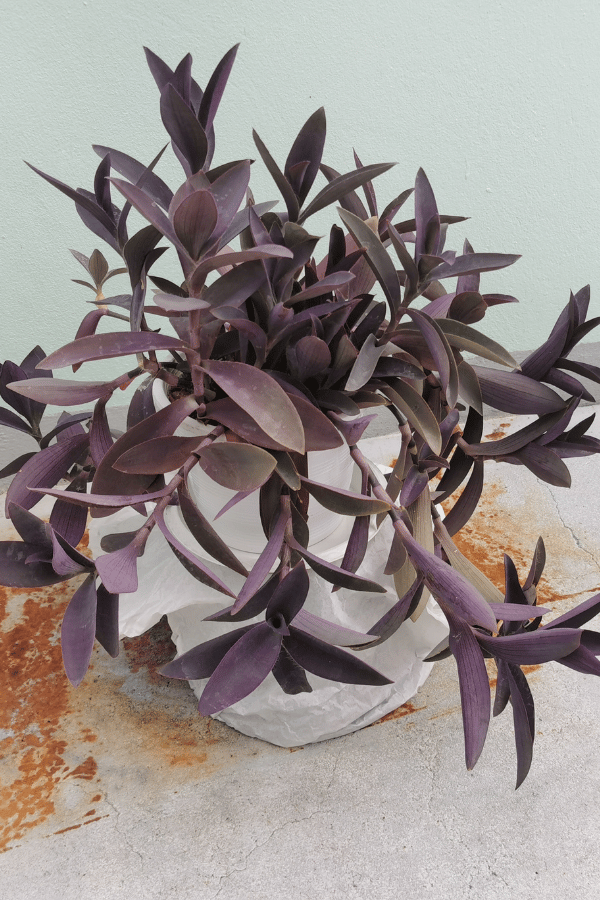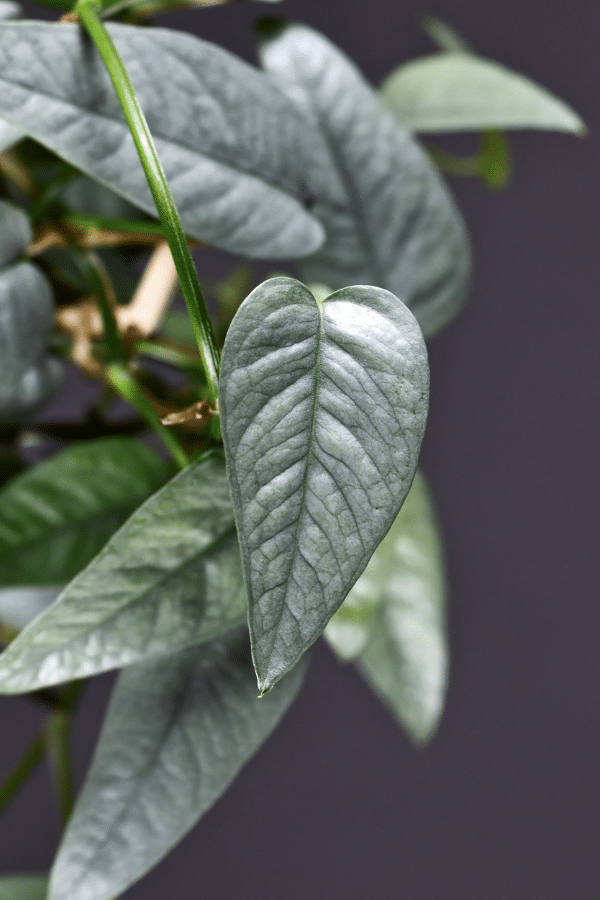Peperomia Albovittata Piccolo Banda
Scientific Name: Peperomia Albovittata ‘Piccolo Banda’
Common Name: Peacock Plant
Peperomia Albovittata Piccolo Banda has gorgeous and attractive leaves that feature purple, brown, and orange patterns on the leaf’s surface. A very eye catching houseplant, Peperomia Albovittata care is easy. Before bringing home a Peperomia Albovittata Piccolo Banda, keep reading for the best care.
Quick Care Overview
| Common Name | Peacock Plant |
| Scientific Name | Peperomia Albovittata ‘Piccolo Banda’ |
| Family | Piperaceae |
| Origin | Netherlands |
| Identification | Light green leaves with silver hue and purple brown pattern |
| Height | Up to 12 inches tall |
| Soil | Rich, well-draining soil that is slightly acidic |
| Water | Water when top two inches of soil is dry |
| Temperature | 65-85F |
| Sunlight | Indirect sunlight |
| Toxic to Cats & Dogs | No |
| Toxic to Humans | No |
| Pests | Mealybugs, spider mites, whitefly |
| Diseases | Leaf spot and root rot |
Below we will dive deep into how to care for Peperomia Albovittata Piccolo Banda.
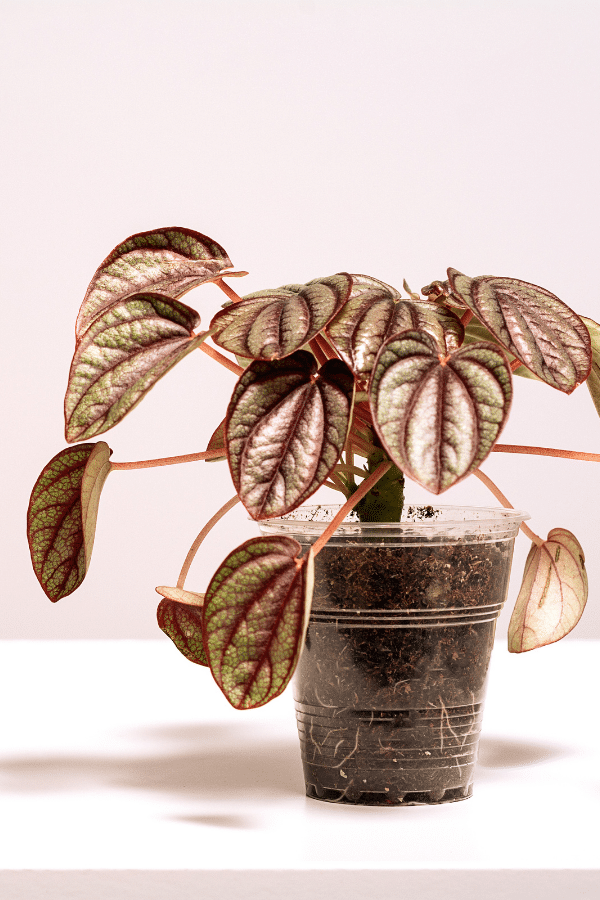
Peperomia Piccolo Banda History
Hailing from the Netherlands as a new cultivar, rare and gorgeous houseplant, Peperomia Albovittata ‘Piccolo Banda’, sometimes called the peacock peperomia, is a hybrid radiator plant that has striking foliage. These tropical plants are commonly called radiator plants due to their tolerance to warm air and sunlight. Although belonging to the Peperomia family with over 1500 known species, this semi-succulent is a unique hybrid variety of Albovittata, which are defined as having bands or stripes.
Peperomia Piccolo Banda Identification
The leaves of the Piccolo Banda are a light green color that almost has a silverish hue. Veins have a purple or brownish-orange pattern on the leaf’s surface. Stems are red and lanky. Being a compact plant with attractive fleshy foliage makes this plant very admirable.
Peperomia Piccolo Banda Growth Facts
Attention-grabbing, low maintenance, and compact in size, these cute tropical plants look lovely sitting on desks, windowpanes, or shelves.
How Big Does a Peperomia Piccolo Banda Get?
Perfect for terrariums, small spaces, or tabletops, this semi-succulent will only grow to a maximum height of 12 inches.
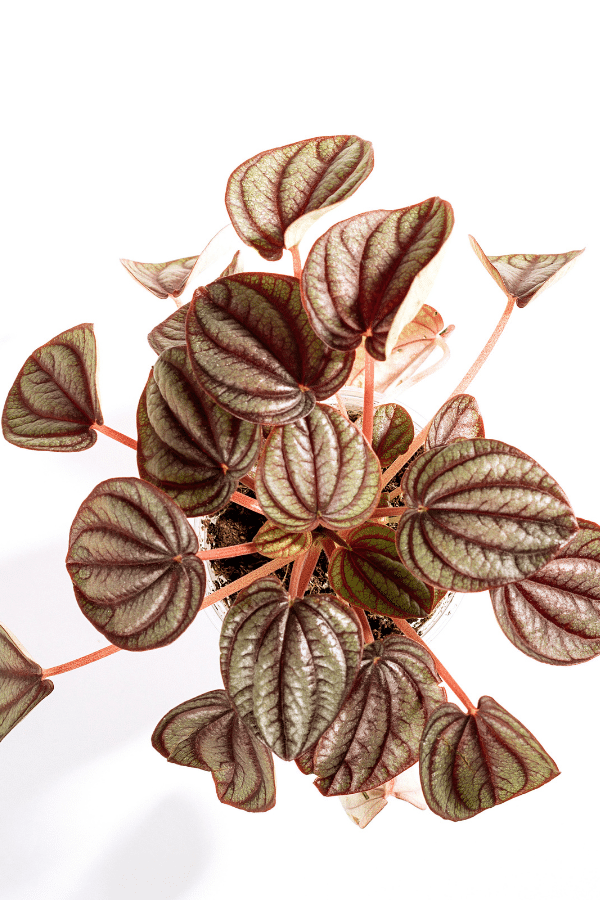
Peperomia Piccolo Banda Care
Peperomia Piccolo Banda care is super easy as it’s low-maintenance, shade-tolerant, and drought-resistant, making this peacock plant a great eye-catching addition for any small interior space.
Searching for a new houseplant?
Take our houseplant quiz to see what your next plant should be based on the room it’s in, the specific lighting the room receives, if you want it on the floor or on the table, and much more!
Best Soil for Peperomia Piccolo Banda
Piccolo Banda prefers to have rich, well-draining soil that is slightly acidic or neutral. An excellent growing medium may be created by starting with a peat or coco coir-based soil and mixing in additions of perlite, sand, or orchid bark at about a 2:1 ratio. Alternatively, you may utilize a commercial cactus or succulent mix.
Peperomia Piccolo Banda Fertilizer
The peacock peperomia does not require much fertilization. Applying a diluted balanced liquid fertilizer once a month during the growing season of spring and summer should go a long way. Overfeeding with chemical fertilizer may cause extensive damage, so ensure that you follow all label instructions and do not overfertilize. In the case of Peperomia Albovittata, most liquid fertilizers may be diluted by about half, as they are not heavy feeders. Do not fertilize in winter.
Peperomia Piccolo Banda Watering
Classified as semi-succulent, this tropical plant is essentially drought resistant. It can conserve a lot of water, making it a suitable choice for beginners. Water after the top two inches of soil has become dry, about once a week in the warm season and about twice a month in the winter. Do not overwater; these semi-succulents require very little water and are largely susceptible to issues from overwatering. It is better to underwater than to overwater the Peperomia Piccolo Banda.
Peperomia Piccolo Banda Light Requirements
The Peacock Peperomia prefers partial shade to indirect sun. Do not expose the Peperomia Piccolo Banda to direct light as it will burn very quickly. A north or east-facing window is a good choice to place this plant. Alternatively, this plant also may be a good choice for offices or basements under fluorescent bulbs.
Peperomia Piccolo Banda Temperature & Humidity
Although it will tolerate hotter conditions, Piccolo Albovittata has an ideal temperature between 65 to 85F. However, it is imperative that you do not allow your houseplant to be placed in environments with temperatures below 60 degrees to avoid issues. Additionally, while this plant is called a radiator plant, do not place near a heater, air vent, or cold window as sudden temperature changes tend to stress this plant out significantly. Peperomia Albovittata enjoys average home humidity, between 40-50%, and does not require high humidity levels as preferred by other peperomia species.
Repotting Peperomia Piccolo Banda
Repotting of the Piccolo Banda is likely wholly unnecessary. Having a small root system, being a compact plant, and preferring a tight pot, repotting is not suggested unless you see roots escaping through the drainage holes. Keep in mind that this plant does not mind being container-bound. If you choose to repot, ensure that you do so in either spring or early summer and consider putting it back into the same pot or one only one to two inches larger in diameter.
Peperomia Piccolo Banda Maintenance & Pruning
For the best Peperomia Piccolo Banda care, pinch back any discolored or spindly leaves in spring to encourage a neater appearance. Keep in mind that too much trimming will damage this plant and should only be done to help shape the plant. Due to its central clumping growth habit, little pruning will be needed to keep it looking shapely and bushy.

Propagating Peperomia Piccolo Banda
The best way to propagate this plant is through root divisions. Simply take the healthy plant out of its pot and brush off the dirt so you can see the roots. Divide the plant into smaller portions from the roots. Each portion should have a couple of roots attached. Next, plant the division(s) into moist, rich soil and tamp down and allow to grow. Do not cover the new plants with a bag, as suggested with some other propagations. These plants do not do well with excess humidity. Remember to place the mother plant back into the soil quickly and not let the roots dry out. Alternatively, this plant may be propagated by stem cuttings.
Peperomia Piccolo Banda Toxicity
Peperomia Piccolo Banda is non-toxic to humans, cats, and dogs. Being a houseplant, don’t ingest any part of this plant as it can cause digestive issues, toxic or not.
Toxicity to Humans
Peperomia Albovittata are considered non-toxic to humans. However, they should still not be consumed as they may cause mild digestive issues.
Toxicity to Cats & Dogs
Peperomia Albovittata are considered non-toxic to pets. However, it is best not to allow your pets to ingest this plant, as it may also cause mild digestive issues.
Peperomia Piccolo Banda Problems
Peperomia Piccolo Banda Leaves Turning Yellow
The number one cause of Peperomia yellow leaves is overwatering. Ensure that you are only watering when the top half of the plant’s soil is completely dry and that the plant is not sitting in excess water. Yellowing of the leaves may also be an indicator of pest infestation. Look at the stems and undersides of leaves to check for a pest problem.
Peperomia Piccolo Banda Leaves Turning Brown
The number one cause of brown leaves is fungal disease such as root rot caused by overwatering. Leaves with fungal issues may appear brown and mushy. Sun damage, fertilizer damage, or severe dehydration may also cause browning of the leaves.
Peperomia Piccolo Banda Diseases
Peperomia Albovittata is not prone to pests or diseases. The most common conditions to affect peacock peperomia are water-related fungal infections such as leaf spot and root rot. Be careful not to overwater and to provide a container with adequate drainage.
Peperomia Piccolo Banda Pests
Although widely pest-resistant due to its thick flesh, like almost any indoor houseplant, Peperomia Piccolo Banda may be susceptible to spider mites, mealybugs, whiteflies, and more. Upon identifying an infestation, isolate the plant, and treat it with insecticidal soap following the instructions on the label.
FAQ
How Big Do Peperomia Piccolo Banda Get?
The Peperomia Piccolo Banda plant is a slow grower. Once mature, the plant will reach a maximum height of 12 inches.
Are Peperomia Fast Growing?
Peperomia Albovittata are not fast growers, so peperomia care such as pruning and repotting, is very easy as the plant doesn’t require much maintenance due to its slow growth.
Is Peperomia a Hanging Plant?
Peperomia is usually found as an upright indoor plant, but they can be hung and trained to trail down.
Do Peperomia Like to be Misted?
Peperomia Piccolo Banda loves to be misted. Any extra moisture you can provide the plant, it will like.

